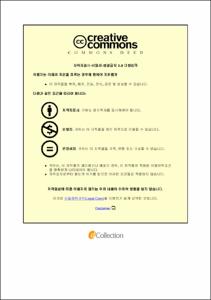Studies on the community structure changes in marine organisms caused by anthropogenic activity using DNA metabarcoding approach
- Abstract
- 다양한 환경 요인 중 인간의 인위적 활동은 해양생태계에 광범위한 영향을 미칠 수 있다. 이와 관련된 많은 연구가 수행되었음에도 불구하고 인위적 활동이 해양생태계에 미치는 영향에 대한 정보는 여전히 제한적이고 논란의 여지가 있다. 본 연구에서는 인위적인 생태 교란이 해양생물 군집 구조에 미치는 영향을 확인하기 위해 한국 남해의 물리적 해저 지형의 변화가 있는 해역과 주변 해역에서의 어류 및 식물플랑크톤 군집을 환경DNA (eDNA) 메타바코딩을 이용하여 비교 분석하였다. MiFish 메타바코딩 결과, 총 30개의 해수 샘플에서 152개의 어류 amplicon sequence variants (ASVs)를 확인하였으며, 이는 29목, 62과, 104속, 114종(9월 73종, 2월 89종)으로 할당되었다. Heatmap 분석을 통해 해저 지형의 변화가 있는 해역과 주변 해역의 확연한 어류 군집 구조 차이를 확인하였으며, 그 중 Pagrus major, Lateolabrax japonicus, Zeus faber, Eopsetta grigorjewi가 주변 해역보다 유의하게 풍부한 것으로 나타났다. 어류 군집 내 종 조성은 인위적 활동에 대한 중요한 지표가 될 수 있으며 이는 계절적 변동성을 보이는 것을 확인하였다. 식물플랑크톤 군집의 경우, 9월에는 Cyanobacteria와 Haptophyta가 각 해저 지형의 변화가 있는 해역과 주변 해역에서 군집 내 유의하게 풍부한 것으로 나타났다. 반면, 2월은 두 해역 간의 군집 구조가 유의한 차이를 보이지 않았는데 이는 식물플랑크톤 군집이 인위적 활동의 영향을 평가하는 데 있어 어류 군집보다 민감하지 않을 수 있음을 나타낸다. 또한 해저 지형의 물리적 구조 변화에 따른 어류 군집 구조 변화를 만든 요인이 무엇인지 확인하기 위해 해당 해역에서 유의하게 풍부하였던 어종인 P. major의 위 내용물을 분석하여 해역별 먹이 생물 조성에 차이가 있는지 알아보고자 하였다. 18S V9 영역 메타바코딩 결과, 총 145개의 위 내용물에서 704개 (3월 399개, 5월 202개, 8월 250개)의 먹이 일배체형을 확보하였으며, heatmap 분석으로 두 해역 간 P. major 먹이 구성의 유의한 차이를 확인하였다. 물리적으로 해저 지형이 변형된 해역에서는 편새목(Phlebobranchia)과 강새목(Stolidobranchia)이 유의하게 풍부하였고, 주변 해역에서는 해변말미잘목(Actiniaria)과 십각목(Decapoda)이 먹이 구성을 구분하는 주요 분류군인 것으로 확인되었다. 본 연구를 통해 인위적 활동이 어류 및 식물플랑크톤 군집과 저서생물 군집 구조에 미치는 영향을 확인하였으며, 메타바코딩 분석은 높은 민감도와 통계적 신뢰성으로 해양생태계에 미치는 인위적 활동의 영향을 평가하는데 유용한 것을 확인하였다. 그러나 본 연구는 단기간의 연구이며 수산자원의 과학적 관리 및 보존을 위해서는 인위적 활동이 해양생태계에 미치는 생물학적 영향을 평가하기 위한 추가 장기적인 연구가 수행되어야 한다.
- Issued Date
- 2022
- Awarded Date
- 2022. 2
- Type
- Dissertation
- Publisher
- 부경대학교
- Affiliation
- 부경대학교 대학원
- Department
- 대학원 4차산업융합바이오닉스공학과
- Advisor
- 오철웅
- Table Of Contents
- Ⅰ. General introduction 1
Ⅱ. Environmental DNA metabarcoding analysis of fish assemblages and phytoplankton communities in a furrowed seabed area caused by anthropogenic activity 7
2.1 Introduction 7
2.2 Materials and Methods 10
2.2.1 Seawater sample collection 10
2.2.2 Metabarcoding analysis of fish and phytoplankton taxa from the seawater samples 12
2.2.3 Bioinformatic data analysis 14
2.3 Results 16
2.3.1 Environmental parameters 16
2.3.2 Fish assemblages by metabarcoding analysis 17
2.3.3 Comparative analysis of fish assemblages between the furrowed areas and distantly located areas 23
2.3.4 Comparative analysis of phytoplankton communities between the furrowed and control areas 31
2.4 Discussion 37
Ⅲ. Stomach content analysis of red seabream, Pagrus major in an anthropogenically disturbed seabed area using DNA metabarcoding 63
3.1 Introduction 63
3.2 Materials and Methods 66
3.2.1 Specimen collection 66
3.2.2 DNA metabarcoding for stomach content analysis 67
3.2.3 Bioinformatic data analysis 70
3.3 Results 72
3.3.1 Prey items of Pagrus major identified by NGS analysis 72
3.3.2 Comparative analysis of diet compositions of Pagrus major between the furrowed and distantly located areas 76
3.3.3 Species identification of prey items in the stomach by MiFish and COⅠ metabarcoding analyses 84
3.4 Discussion 88
Ⅳ. References 103
- Degree
- Doctor
- Appears in Collections:
- 대학원 > 4차산업융합바이오닉스공학과
- Files in This Item:
-
-
Download
 Studies on the community structure changes in marine organisms caused by anthropogenic activity usin.pdf
기타 데이터 / 3.57 MB / Adobe PDF
Studies on the community structure changes in marine organisms caused by anthropogenic activity usin.pdf
기타 데이터 / 3.57 MB / Adobe PDF
-
Items in Repository are protected by copyright, with all rights reserved, unless otherwise indicated.